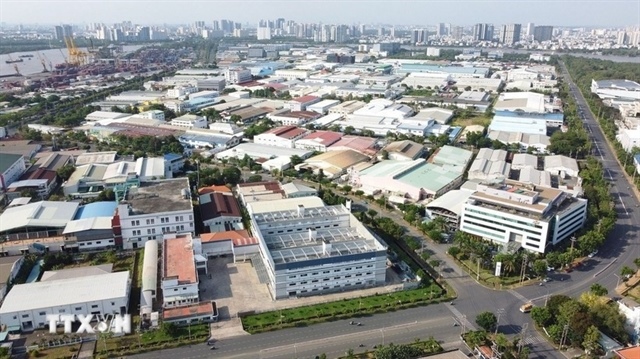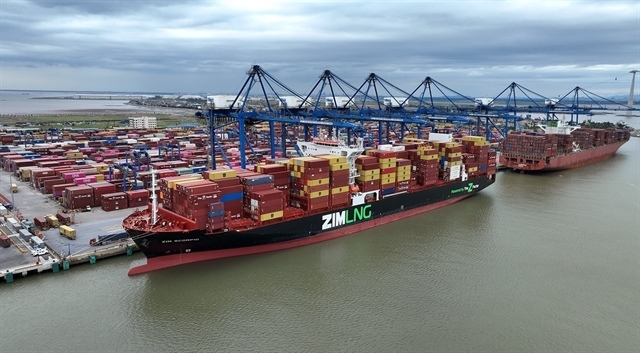DDCI complements PCI findings to improve business environment
DDCI complements PCI findings to improve business environment
While the Provincial Competitiveness Index (PCI) has spread the comprehensive and basic reform of administrative procedures to all parts of Vietnam, the District and Department Competitiveness Index (DDCI) is seen as a solution to help localities, especially those with medium or low PCI scores. Dr. Le Duy Binh, managing director of management consultants Economica Vietnam, explained to VIR’s Hoang Oanh how the DDCI defines more clearly the limitations in policy implementation and business reform at district and department levels.

Dr. Le Duy Binh, managing director of management consultants Economica Vietnam
|
The PCI is fairly popular in Vietnam as a means of assessing innovation and competitiveness among localities. Why is an additional DDCI set required, and how are the two systems related?
The DDCI was first developed in Vietnam by Economica Vietnam and Lao Cai People’s Committee in 2013. After eight years, more than 20 provinces have applied this indicator framework for assessing economic management and governance at the local level, in addition to the application of the PCI framework.
The system is developed to measure the quality of local economic governance at districts and provinces – the administrative levels which directly interact with economic entities like household businesses, enterprises, cooperatives, and investors.
When we surveyed the PCI data, we found that although there are many good policies enacted by the central and provincial levels, the implementation at grassroots level, in particular at the department or district level, is not uniformly effective.
Inconsistent policy implementation, depending on the circumstances, has kept the PCI low in many localities, despite efforts to improve the business environment.
At this point, the DDCI will help departments, agencies, and people’s committees of districts and cities identify the advantages and shortcomings and limitations in improving the business and investment environment of the province.
For example, there are issues of market entry, informal fees, transparency, and effective implementation of policies from the central and provincial levels at the district level. The same goes for the provincial government departments and agencies about licensing, the cost and time in complying with administrative procedures and the quality of public services, the issue of information transparency and business support services.
In other words, the DDCI is a further extension of the PCI, expanding and deepening the reform level of the business environment, improving the quality of economic governance in Vietnam.
Since its introduction, it has contributed to improving the PCI rankings of many localities and strengthening the high ranking positions of provinces in the PCI rankings in recent years. The application of the DCCI in districts and departments since 2015 is also one of the reasons for Quang Ninh to maintain its first position in the national PCI ranking for four consecutive years.
What does the DDCI inherit from the PCI?
The PCI outlines the main criteria for quality governance for provincial governments. When developing the DDCI, we also took the functions and duties of the provincial government as a foundation, in particular the functions and duties of the departments at the district level.
In terms of general criteria, the DDCI continues to use and inherit 60-70 per cent of the PCI criteria. Criteria such as transparency, effectiveness in policy implementation, low informal fees, and the dynamism of the local government must be required at any level, from central to local levels (departments or agencies) and even the district level. There will also be new criteria suitable for the specific characteristics of the district government or the department level.
For example, land accessibility cannot be applied for assessment and comparison at all departments because there are departments and agencies that are not related to land. Similarly, indicators on legal mechanisms are only applied to a few departments.
Also, district governments have additional criteria to be used, depending on the target audience of the district government, and the departments and agencies.
Usually, district and suburban authorities deal with matters related to individual business households, while provincial authorities tackle larger units. This division in responsibilities warrants different evaluation criteria for these authorities.
Currently, the PCI evaluates provincial economic governance based on 10 criteria, while the DDCI assesses the governance capacity of district authorities through 10 component indicators. These are costs of market entry; accessibility to land and business premises; quality of public service in licensing and efficiency in inspection; proactivity and dynamism of district leadership; efficiency of public and private dialogues and accountability; information transparency and fair treatment; effectiveness in administrative reforms, public services, and of district one-stop-shops; effectiveness of business support services; informal costs; and public order and security supporting a safe business environment.
In addition, five indicators are used in the DDCI to measure the economic governance of provincial government departments and agencies. They are the effectiveness in implementation of legal and planning documents; quality of public services; information transparency and fair treatment; proactivity and accountability of department leadership; and informal fees.
According to statistics, when the PCI increases by one rank, the investment attraction in industries and the local economy increases by about 1.5 per cent. How has the increase in DDCI rank helped to increase the local PCI tally?
We do not have specific figures on the corresponding increase in district-level investment attraction as the DDCI increases but localities that have implemented the DDCI over the past few years have had a positive increase in their PCI. For example in Quang Ninh, Bac Ninh, and Dong Thap, the DDCI has contributed to improving their rankings and consolidating their high positions in the PCI rankings over the years. In particular, the DDCI has become one of the priority contents in the administration of the provinces in order to implement solutions to improve the business environment and enhance competitiveness.
Thereafter, the system continued to prove to be an effective tool to improve economic governance and administration capacity in the provinces such as Vinh Phuc, Bac Ninh, Tuyen Quang, Quang Ninh, Cao Bang, and many more.
Which localities have become examples of successful DDCI application?
According to the 2020 PCI 2020 Report announced by the Vietnam Chamber of Commerce and Industry, Lao Cai and Son La are two provinces with impressive changes in the PCI with rankings at 16 and 54 across the country, up nine and three places, respectively, compared to the results in 2019. If we look at the PCI growth of these two provinces over the years, we can see that the PCIs in Lao Cai and Son La both started to increase rapidly since the implementation of the DDCI assessment framework.
In addition, Lao Cai and Son La have their own characteristics, such as focusing on the areas that are the province’s strength in localities such as agricultural development.
The new approaches of these two provinces to economic development and business environment improvement as well as development of industries combining with issues of gender equality, attention to ethnic minorities, environmental issues, culture, and history have brought Son La and Lao Cai to be the first two provinces to successfully implement and contribute to replicating this model to many other provinces across the country.


























